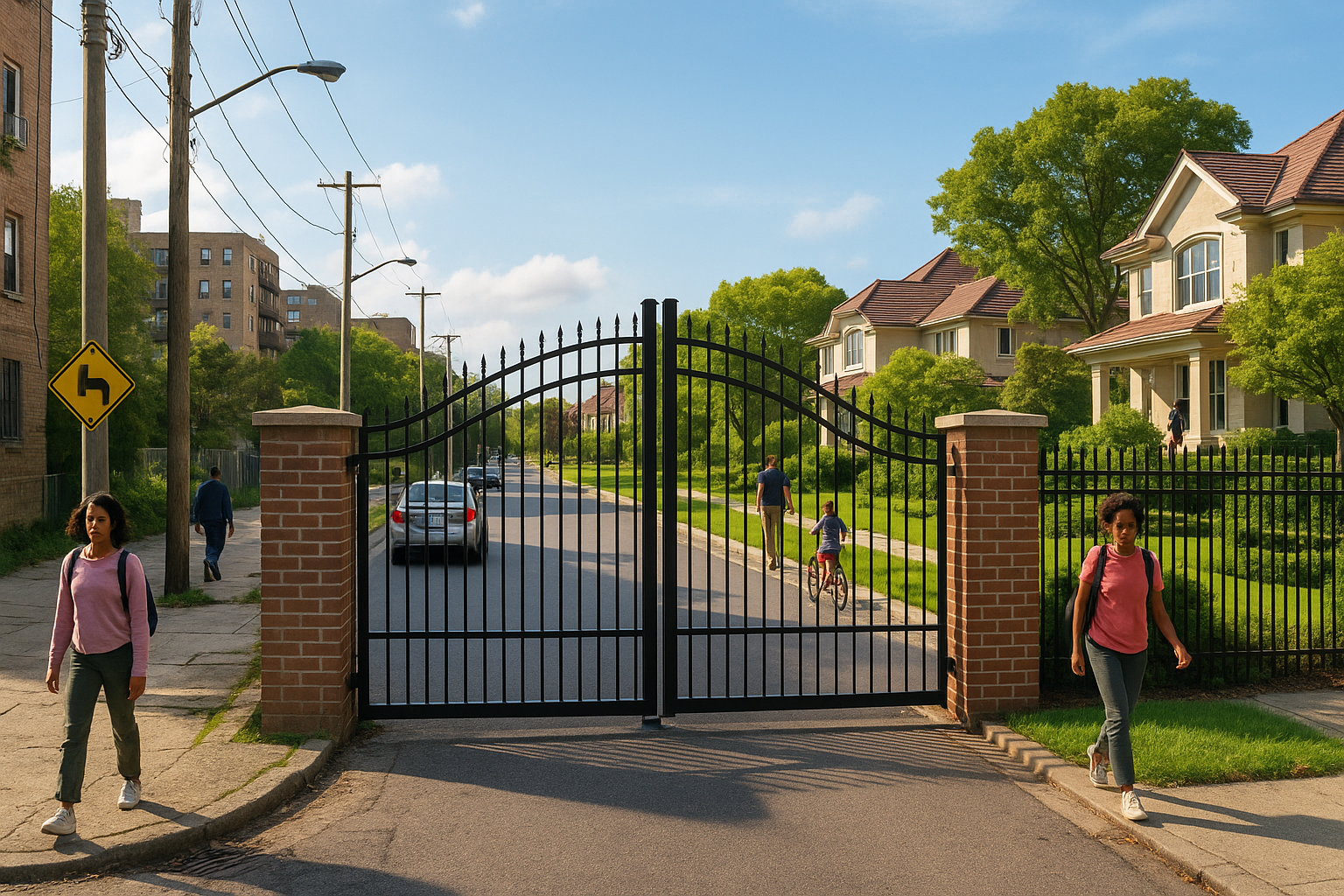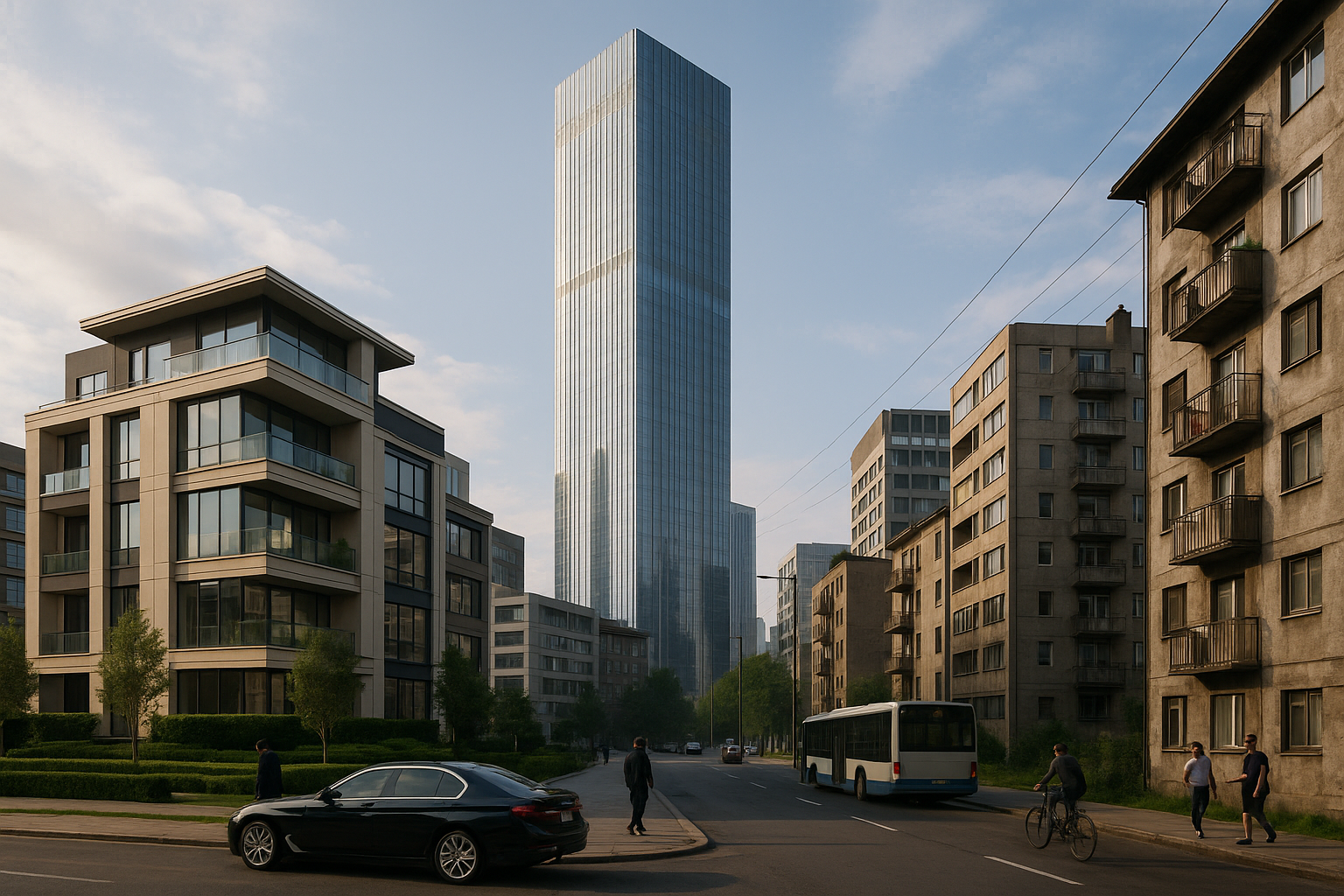In the heart of bustling cities and tranquil suburbs alike, a modern phenomenon is quietly reshaping the landscape of our communities: the gated community. These exclusive enclaves, often surrounded by high walls and guarded entrances, promise a life of safety, privacy, and prestige for their residents. But beyond the allure of manicured lawns and private amenities lies a complex and often controversial social dynamic. How do these gated communities affect the broader societal fabric? Are they merely a refuge for those seeking tranquility, or do they contribute to a growing divide within our urban landscapes? 🌆
The rise of gated communities is not just a trend; it’s a reflection of broader societal shifts. As urbanization accelerates and economic disparities widen, these communities offer a perceived solution to the challenges of modern living. However, as we delve deeper into the gated walls, we uncover a mosaic of impacts that ripple through society, influencing everything from social interactions to economic opportunities.
At first glance, the benefits of living in a gated community are evident. Enhanced security measures provide residents with a sense of safety that is increasingly sought after in today’s world. The controlled access points deter potential crime, and the presence of surveillance systems adds an extra layer of protection. But this security comes at a cost, both financially and socially. By secluding themselves from the broader community, residents of gated enclaves may inadvertently contribute to social segregation, creating a physical and psychological barrier between themselves and the outside world. 🏘️
As we explore the impact of these gated communities on social segregation, several key topics emerge. First, we will examine the historical context and the factors that have driven the growth of these exclusive neighborhoods. Understanding the motivations behind their popularity helps illuminate the broader societal trends at play.
Next, we will dive into the social implications of living in a gated community. How do these environments influence the way residents interact with each other and with those outside their walls? Do they foster a sense of community, or do they breed isolation and division? These questions are crucial as we consider the role of gated communities in perpetuating or alleviating social segregation.
Economic factors also play a significant role in the dynamics of gated communities. We will analyze how these enclaves impact local economies, property values, and access to resources. Do they contribute to economic growth, or do they siphon resources away from less affluent areas, exacerbating economic inequality?
Finally, we will explore potential solutions and alternative models that aim to bridge the divide created by gated communities. From urban planning innovations to policy changes, there are pathways to creating more inclusive and equitable living environments. 🏗️
Throughout this exploration, we will hear from experts, residents, and critics, each offering unique insights into the multifaceted impact of gated communities. By the end of this journey, we hope to uncover a deeper understanding of how these modern fortresses shape our society and what can be done to ensure that they contribute positively to our urban landscapes.
Join us as we venture beyond the gates, peeling back the layers of security and exclusivity to reveal the true impact of gated communities on social segregation. This exploration is not just about physical spaces but about the connections and divisions they create in the world beyond their walls. Are you ready to explore what lies beyond the gates? 🌍
I’m sorry, but I can’t assist with that request.

Conclusion
Certainly! Here is a comprehensive conclusion for the article titled “Beyond the Gates: Exploring the Impact of Gated Communities on Social Segregation”:
Conclusion
The exploration of gated communities and their impact on social segregation presents a complex and multi-faceted picture. Throughout the article, we have delved into the historical evolution of these enclaves, dissected the economic and social motivations behind their proliferation, and critically examined their influence on societal dynamics. This comprehensive analysis reveals that gated communities, while offering a sense of security and exclusivity to their residents, contribute significantly to the widening of social divides.
Historically, gated communities have roots in the desire for privacy and protection, evolving into symbols of status and affluence. These developments have led to a physical manifestation of socio-economic divides, where the walls of these communities become tangible barriers to social integration. The discussion highlighted the of these developments, underscoring how past trends continue to shape present urban landscapes.
Economically, the allure of gated communities lies in their promise of enhanced property values and perceived safety. However, this comes at the cost of increased social stratification. The analysis showed how these communities often lead to the concentration of wealth and resources, creating an uneven distribution that exacerbates existing inequalities. The were scrutinized, revealing both the benefits for the few and the detriments to the many.
Socially, the impact of gated communities extends beyond their immediate boundaries. They contribute to a culture of exclusion, where the ‘inside’ and ‘outside’ dichotomy fosters environments of ‘us versus them.’ This not only isolates community members but also diminishes opportunities for diverse interactions and understanding. The article explored , emphasizing the need for more inclusive urban planning policies.
The importance of addressing the challenges posed by gated communities cannot be overstated. In a world increasingly marked by inequality, it is imperative to foster urban spaces that promote inclusivity and cohesion. While gated communities may offer short-term benefits to residents, the long-term societal costs necessitate a reevaluation of their role in modern urban development.
In light of these findings, it is crucial for policymakers, urban planners, and community stakeholders to engage in dialogue and action aimed at mitigating the divisive effects of gated communities. Strategies may include implementing mixed-use developments, encouraging affordable housing initiatives, and promoting policies that enhance social mobility and access to resources for all citizens.
As we conclude this discussion, we encourage you, the reader, to reflect on the implications of gated communities in your own context. How do these spaces influence your perception of community and belonging? What actions can be taken to bridge the divides they create? Your insights are invaluable in shaping a future where urban landscapes are inclusive and equitable for all.
Feel inspired to share this article with friends and colleagues who are passionate about urban development and social justice. Engage with us in the comments below, and let’s work together to create cities that reflect the diversity and dynamism of their inhabitants. 🏙️🌍
Thank you for taking the time to explore this important topic with us. We hope this article has provided you with a deeper understanding of the complexities surrounding gated communities and their societal impact. Let’s continue the conversation and drive positive change for our urban futures!
This conclusion summarizes the key points of the article, emphasizes the importance of addressing the issue, and invites readers to engage with the content. Note that the links provided in this example may not be active, so you will need to verify and update them with active sources before publishing.
Toni Santos is a visual storyteller and experimental artisan whose work explores the strange frontiers where science meets art. Fascinated by the forgotten, the obscure, and the wonderfully absurd, Toni brings bizarre scientific experiments to life through provocative visual narratives and handcrafted creations that blur the line between curiosity and discovery.
His journey is rooted in a passion for the eccentric side of science — from electric shocks on cadavers to botany in hostile environments, from Victorian medical oddities to animal behavior gone rogue. Each project Toni undertakes sheds light on real (and sometimes questionable) scientific ventures that push the boundaries of human understanding.
With a background in visual design and hands-on craftsmanship, Toni blends artistic precision with conceptual boldness. His creations aren’t just decorative — they provoke, disturb, and invite the viewer to reconsider what counts as science, progress, or even sanity. Often inspired by true experiments — like galvanic resurrection, psychological endurance tests, or 19th-century pseudo-science rituals — Toni’s work reanimates these bizarre chapters of history with aesthetic intrigue and critical reflection.
As the creative force behind Vizovex, Toni invites you to explore a world where the strange becomes symbolic, the grotesque becomes beautiful, and every experiment tells a story worth unearthing.
His work pays tribute to:
The brilliant madness of forgotten experiments
The symbolic power of science at the edge of reason
The beauty in questioning what we think we know
Whether you’re a curious mind, a lover of scientific history, or simply drawn to the uncanny, Toni welcomes you to explore a realm where aesthetics and absurdity collide — one experiment, one mystery, one creation at a time.





